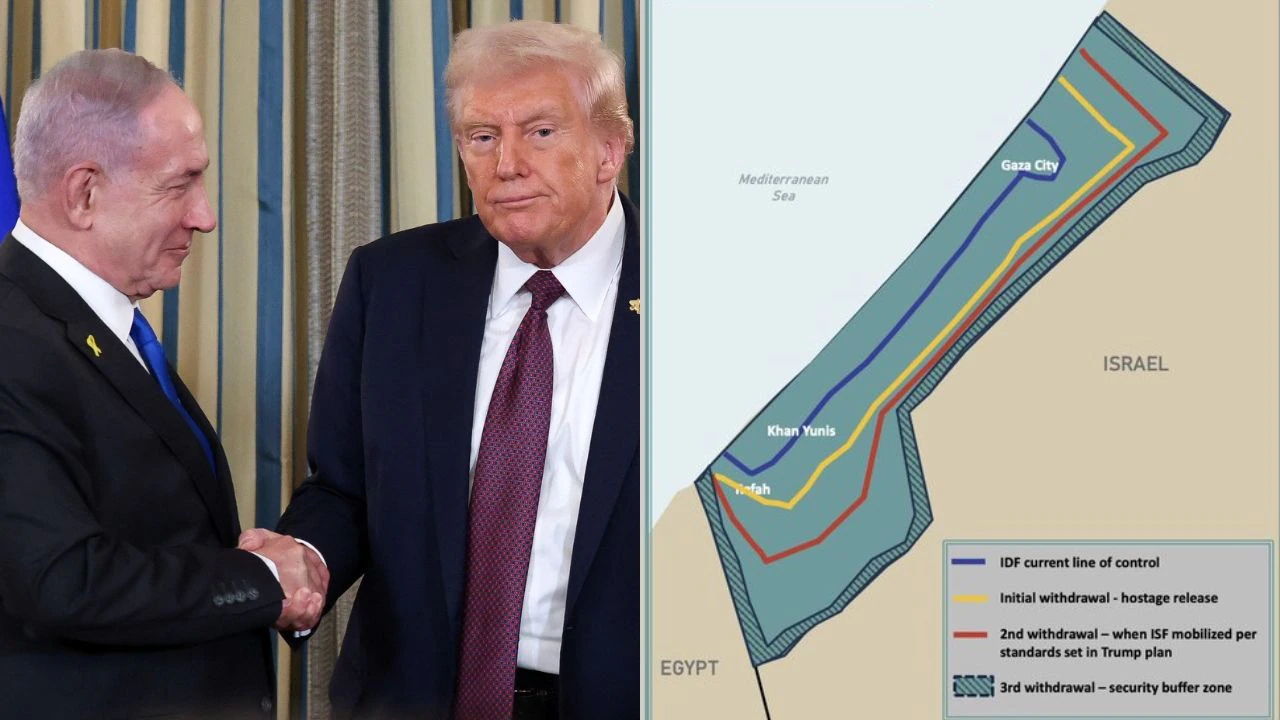
Trump's Gaza Plan: Hopes for Peace or Another Setback?
Light House Denver – On Monday, Israeli Prime Minister Benjamin Netanyahu immediately accepted U.S. President Donald Trump’s new peace plan for the Gaza. This move drew attention to Trump’s ongoing efforts to broker an end to the war between Israel and Hamas. The plan is now in the hands of Hamas, which has stated that it is reviewing the proposal. Trump called the plan a “historic” moment that could bring an end to the two-year-old conflict in Gaza. However, doubts remain, especially given the history of failed U.S.-backed peace efforts.
The latest proposal is outlined in 20 key points. If both Israel and Hamas agree to the terms, the plan would see a complete Israeli military withdrawal from Gaza, carried out in three distinct stages.
2. Stage Two: Gaza would be governed by a temporary transitional body, a technocratic and apolitical committee made up of both Palestinians and international members. This body would be overseen by a “board of peace” headed by Trump and other world leaders, with a focus on Gaza’s reconstruction and economic development.
3. Stage Three: The final stage would involve the full withdrawal of Israeli Defense Forces (IDF) and the establishment of an International Stabilisation Force tasked with maintaining peace and security. Hamas members would receive amnesty if they laid down their arms but would be barred from participating in Gaza’s governance.
“Read More: India Claims Denial of Asia Cup Trophy After Defeating Pakistan”
This proposal shares many similarities with past U.S.-backed peace plans, such as the Israeli military withdrawal and the exchange of prisoners. However, Trump’s Gaza plan introduces new elements.
Trump also proposes a long-term goal of establishing a Palestinian state, a point previously absent from past negotiations.
For Trump, the Gaza Strip is a development opportunity. He envisions a prosperous, reconstructed Gaza where economic growth could stabilize the region and provide relief to Palestinians. The proposal suggests that a combination of international support and regional players could help reconstruct Gaza and stabilize it in both the short and long term.
One of the most striking elements of Trump’s vision is the push to depoliticize Gaza. The administration, along with Israel, hopes to create a Gaza that is free of Hamas and governed by a technocratic administration, devoid of political divisions.
One of the critical questions surrounding the plan is who will represent the Palestinians in Gaza. The proposal hints at a revamped Palestinian Authority (PA), the body that governs parts of the West Bank, taking on the role of overseeing Gaza’s governance.
Additionally, Palestinian police forces would be trained and supervised by the International Stabilisation Force, suggesting that the PA’s police might be tasked with this responsibility. However, Netanyahu has long opposed the idea of the PA governing Gaza, making this a potential point of contention.
The plan faces significant hurdles on both sides. In Israel, Netanyahu will need to secure the approval of far-right factions within his government. These groups have historically resisted peace deals and could obstruct any move toward ending the war. Netanyahu’s political survival often hinges on maintaining the support of these far-right members, which has derailed previous peace efforts.
For Hamas, the acceptance of the plan would mean the end of its political and military presence in Gaza. The group has governed the territory since 2007, making any agreement that strips it of power a monumental shift. Agreeing to such a deal would be a significant departure from their longstanding control. Hamas may be more willing to accept the plan if it recognizes the dire situation of Gazans and the potential for relief. However, their involvement in any peace agreement would come with significant challenges.
Some analysts believe that Netanyahu’s support for Trump’s plan might be a political maneuver. By accepting the proposal, Netanyahu aligns himself with the American president, which could bolster his political capital in Israel. However, the lack of a clear timeline and the likely rejection by Hamas mean that Netanyahu could use the plan as a way to buy political time. With national elections scheduled for October 2026, Netanyahu may also capitalize on a shift in public opinion, potentially even calling for early elections.
As with all past peace efforts, there are strong reasons to be skeptical about the success of Trump’s Gaza plan. The issues surrounding governance, the role of Hamas, and the political challenges within Israel all suggest that the plan may face significant roadblocks. However, if accepted, the plan could offer a glimmer of hope for Gaza’s future, one that envisions stability, economic development, and a break from decades of conflict. Whether this vision can become reality will depend on the willingness of both Israel and Hamas to make difficult concessions.
“Continue Reading: Pro-EU Party in Moldova Wins Election Amid Allegations of Russian Interference”
This information is sourced from newsarenaindia. On Monday, Israeli Prime Minister Benjamin Netanyahu immediately accepted U.S. President Donald Trump’s new peace plan for Gaza. Read the full article on LightHouseDenver.
|Author: Lukman Azhari
|Editor: Anna Hidayat